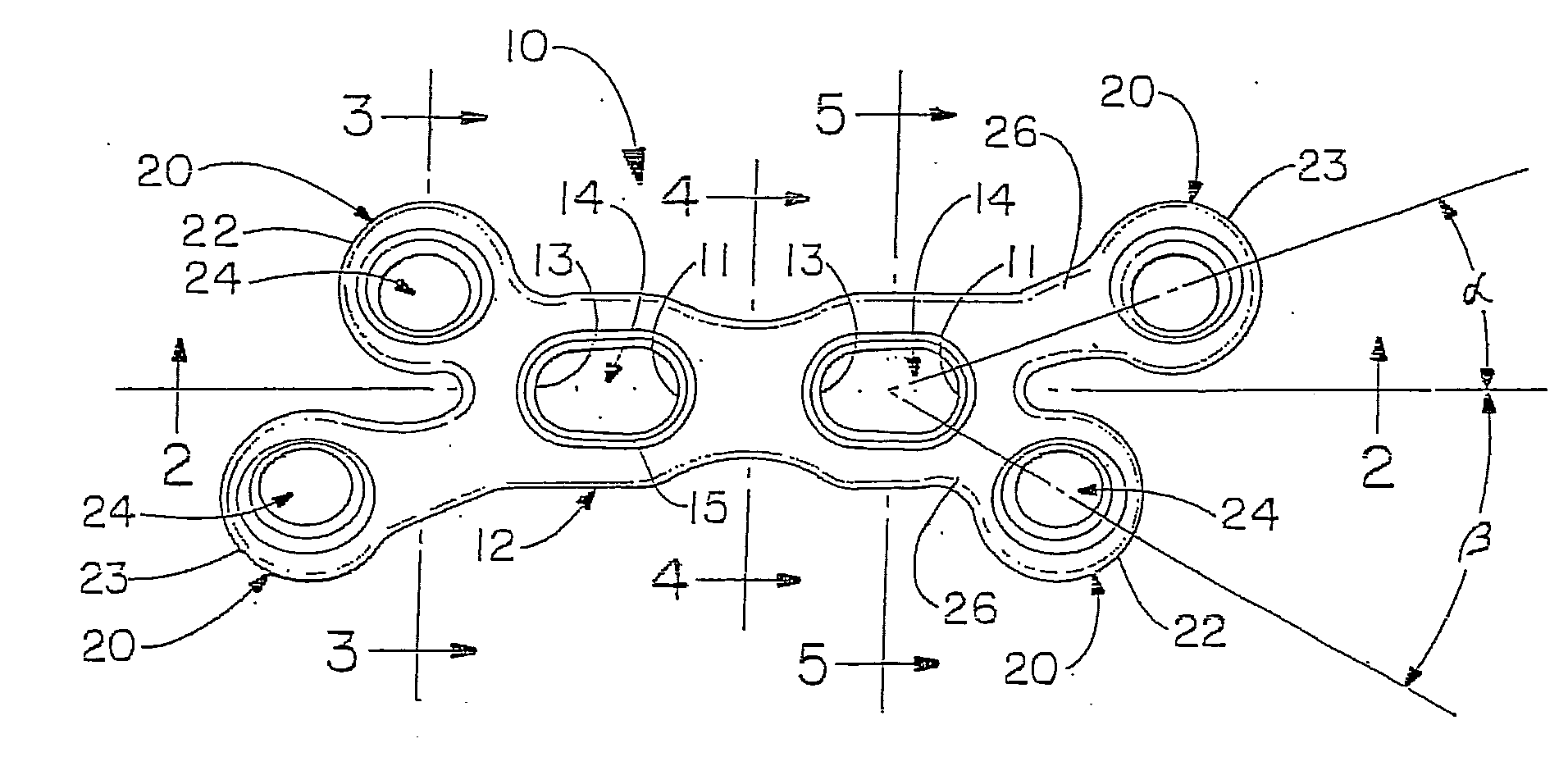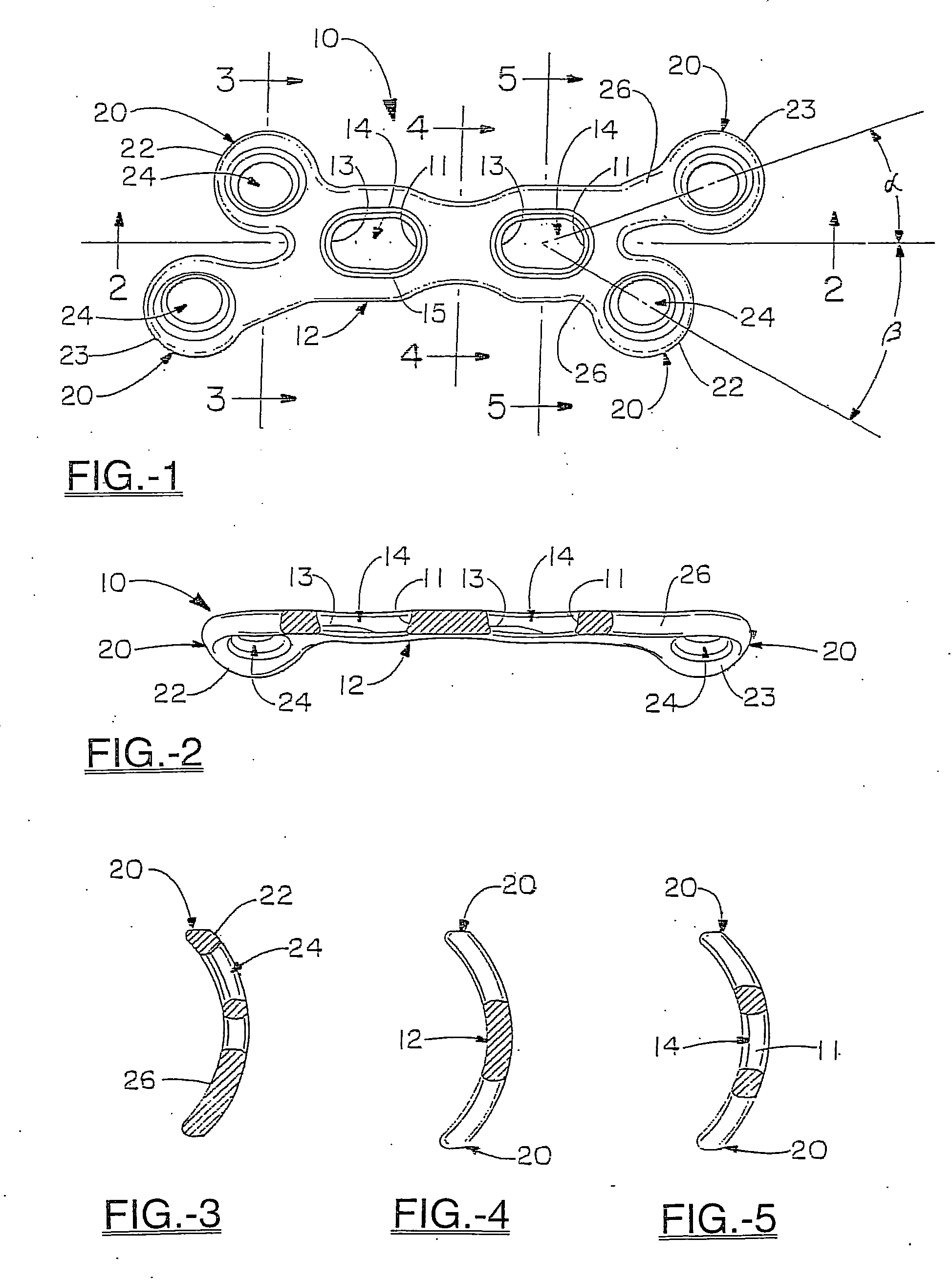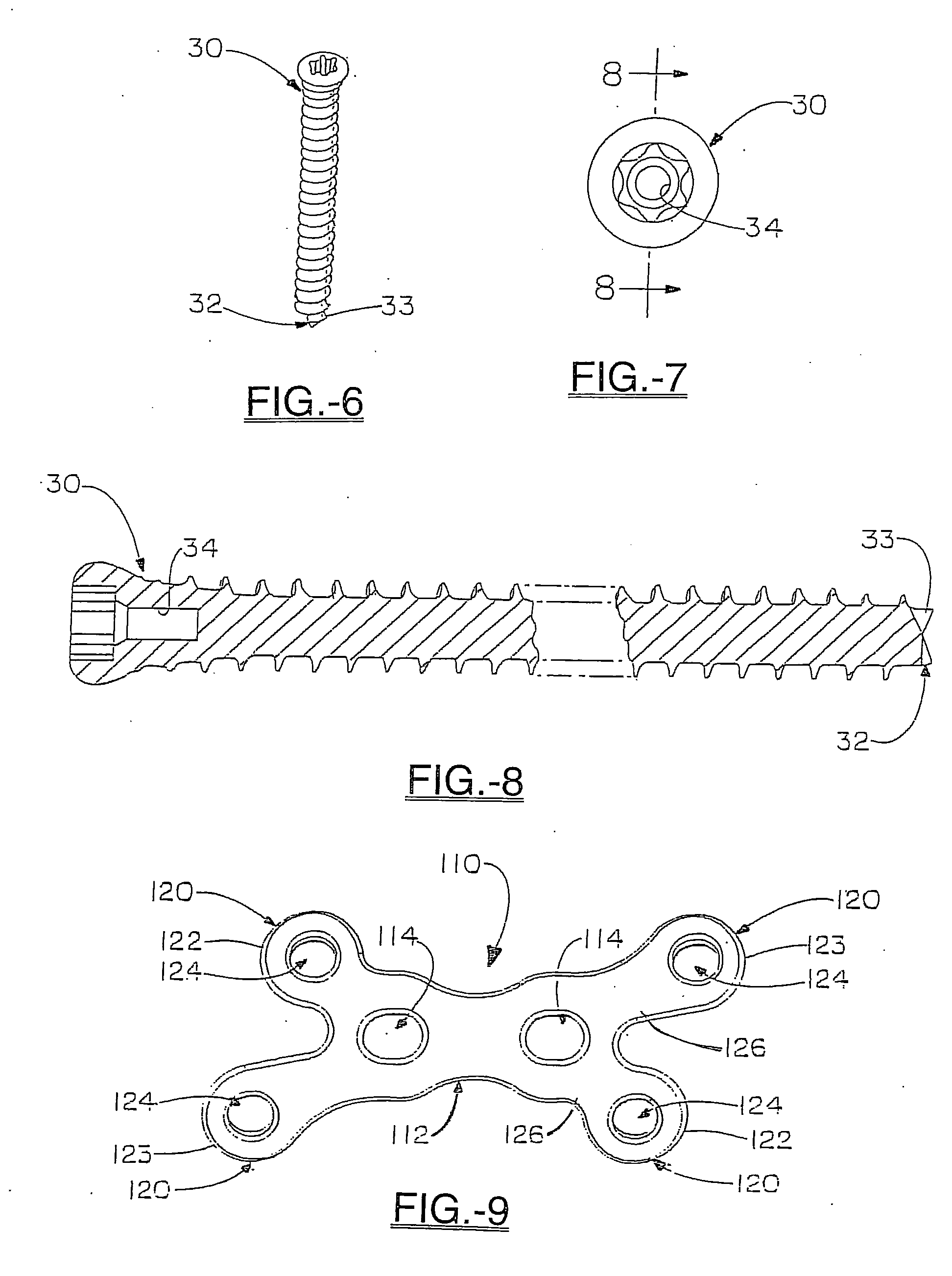Orthopedic plate
a technology of orthopedic plate and plate body, which is applied in the field of orthopedic plate, can solve the problems of screw interference, more individual variations, and more problems in the implanting process, and achieve the effect of improving the function of ligaments and tendons, and preventing the growth of bone cells
- Summary
- Abstract
- Description
- Claims
- Application Information
AI Technical Summary
Benefits of technology
Problems solved by technology
Method used
Image
Examples
Embodiment Construction
[0045] The plate 10 of the present invention is shown having a asymmetric shape which can be thought of as being similar to the Greek letter X with foreshortened opposing diagonal legs extending from a central trunk portion 12 defining the longitudinal axis of the plate. The trunk portion 12 includes one or preferably more screw holes 14 along the longitudinal axis. The number of screw holes in the trunk portion 12 will depend on the length of the plate, and may range from 0 to 6, and more preferably from 2 to 4. In one embodiment the holes are compression holes. The screw holes 14 are preferably slotted or elongated with a larger radius area 11 on each of the screw holes facing in the same direction, and a smaller radius area 13 which has a shallower lip to allow the plate to be set initially and subsequently to be slide into a different position as the screws are tightened down. This allows compression to be applied across the middle of the trunk section. Further, the screw holes ...
PUM
 Login to View More
Login to View More Abstract
Description
Claims
Application Information
 Login to View More
Login to View More - R&D
- Intellectual Property
- Life Sciences
- Materials
- Tech Scout
- Unparalleled Data Quality
- Higher Quality Content
- 60% Fewer Hallucinations
Browse by: Latest US Patents, China's latest patents, Technical Efficacy Thesaurus, Application Domain, Technology Topic, Popular Technical Reports.
© 2025 PatSnap. All rights reserved.Legal|Privacy policy|Modern Slavery Act Transparency Statement|Sitemap|About US| Contact US: help@patsnap.com



